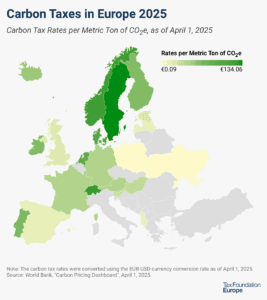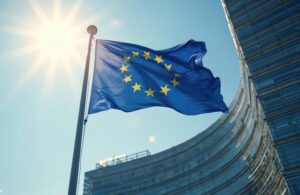
Benefits of Principled Tax Policy: EU VAT Reform Results
4 min readBy: ,“New own resources should fulfil the criteria of simplicity, transparency, predictability, and fairness.”
One would think that the above recommendation came from a TaxA tax is a mandatory payment or charge collected by local, state, and national governments from individuals or businesses to cover the costs of general government services, goods, and activities. Foundation report on principled EU own resources policy. While we would like to claim credit, the recommendation comes from the EU’s own 2016 Monti report and, more recently, the EU’s 2020 Institutional Agreement on new own resources.
When policy is designed on these sound principles, governments can raise sufficient revenue, support the economy, and chart a path toward a successful tax system. The recent EU VAT reform on e-commerce is an example of this, benefitting governments, consumers, and companies.
In July 2021, the EU agreed to eliminate a VAT exemption for goods imported into the EU valued at less than €22 by non-EU companies. In other words, by eliminating a carveout and broadening the tax base, customers will now pay the same tax regardless of the value of the good or if the e-seller is from the EU.
The EU estimated that the exemption was being abused by importers who artificially set the price of their goods below the exemption limit and cost EU treasuries nearly €7 billion a year. This placed a heavier tax burden on taxpayers importing more expensive or larger volumes of goods and hurt government budgets.
When authorities were able to identify this fraud, EU customers would receive a call from customs asking for the additional VAT payment after the good arrived at the customer’s home. The additional cost came as a surprise to many consumers.
In addition, by avoiding the tax, non-EU companies were gaining an unfair competitive advantage over EU companies that were not able to benefit from the exemption.
The reform also addressed company compliance concerns. Before July 2021, sellers needed to have a VAT registration in each Member State in which they had a turnover above a certain overall threshold. The threshold varied from country to country.
The reform simplified this requirement by replacing the various thresholds with one common EU threshold of €10,000. Furthermore, online sellers may now register for an electronic portal called the “One Stop Shop,” where they can take care of all their VAT obligations for their sales across the EU.
For importers, a similar mechanism was implemented called the “Import One Stop Shop” to register for the VAT in the EU and ensure the correct amount of VAT is paid to the correct Member State.
Two years later, how has the reform worked? Is the VAT system for e-commerce more simple, transparent, predictable, and fair?
According to recently published results, the answer is yes.
Member States collected around €20 billion in VAT revenues in 2022. This figure includes €17 billion via the expanded One Stop Shop (OSS) portal as well as €2.5 billion in VAT revenues collected on imports of e-commerce goods. It also includes the new VAT revenues for parcels valued at less than €22—which was highly susceptible to fraud. Overall, VAT revenues collected via these newly implemented systems saw a 26 percent increase compared to 2021 figures.
This new data gives us a more complete picture of the impact and successful implementation of the EU’s VAT rules for e-commerce reform. The past two years demonstrate sound tax policy at play: eliminating the carveouts to broaden the base while simplifying reporting and compliance obligations for companies and consumers have translated into a more efficient tax burden and higher revenues.
Six months into the reform, 8,000 traders had registered in the new system. Today, the new framework has reached almost 130,000 registered companies.
While the VAT e-commerce reform improved the old system, there have been some steps backward in other aspects of the VAT. In April 2022, the Council formally approved reforms to broaden the list of goods and services to which reduced VAT rates can be applied. In other words, more carveouts can now be implemented despite the marginal benefits to consumers and more complex tax rules. The approach also cuts against the usefulness of the VAT as a source of revenue.
As the EU considers further reforms to the VAT system—in particular with the VAT in the Digital Age proposal (ViDA)—and other new own resources, policymakers should continue to rely on these guiding principles, rather than using tax fairness as a code word for income inequality or corporate profitability. Clear, transparent rules make it easier to see whether the tax system is working fairly. Member States and the EU can work together to simultaneously raise revenue and support the economy.
Note: Originally published on April 19, 2022, this blog post has been updated to reflect current developments.





